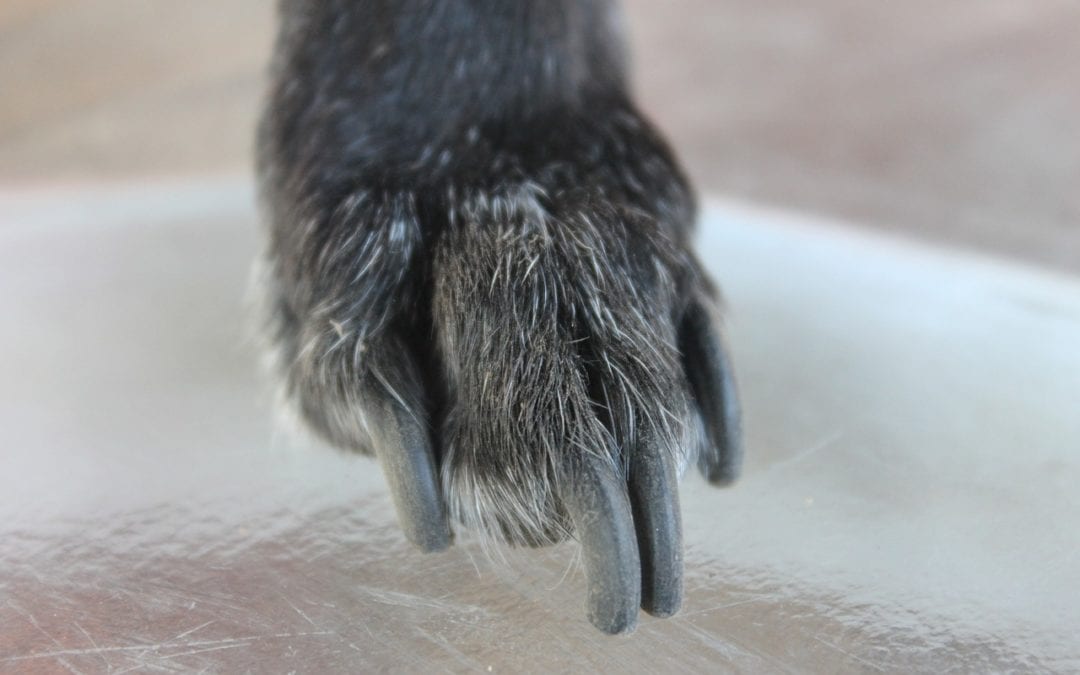Many pet owners fear the dreaded task of trimming their dogs’ nails. Thankfully there are techniques for trimming dog nails that can be mastered by the amateur with the right tools, education, and practice.
A dog’s nails generally need to be trimmed every month or few weeks, depending on how much exercise or wear-and-tear those nails get. The more active the dog, the less likely he or she will need frequent trims, but it also depends on how quickly your dog’s nails grow.
The Trouble with Long Nails
Although nails don’t seem to be all that important in your dog’s overall health, nails that get too long can create discomfort and problems when left untrimmed. Dogs whose nails are neglected experience problems with gait and balance, are at increased risk of a nail breaking (ouch!), and may experience discomfort or pain when walking. In more serious cases, long nails (especially those dewclaws) can begin to curl up and under, embedding in skin and resulting in painful infections.
For the health and mobility of your dog, factor in monthly nail trimmings as a part of his or her wellness care. If your pet has a broken or ingrown nail that you are concerned about, come in so we can examine your pet and take care of the issue before it develops into a more painful problem.
Some Helpful Hints to Successfully Trimming Dog Nails
The fear pet owners experience when trimming dog nails is associated with worry about cutting into the “quick”. The quick is the living part of your dog’s nail, where nerves and blood vessels reside. Accidentally cutting the nail too short can result in pain and bleeding (and distress and upset for the pet owner, too). But, the quick isn’t hard to avoid when you are skilled in nail trimming.
Typically, the quick is the area of your dog’s nail closest to the paw and pink or light in color. Since some dog’s nails are dark in color, or the quick is simply too hard to find, it is best to ask your groomer or veterinarian for assistance or instruction until you can handle the task with ease.
Here are recommendations on best practices, once you get used to nail trimming:
Get the right tools – Invest in a good quality, guillotine style set of clippers that are comfortable to grip.
Start slow and trim a small amount of the nail at a time – This is especially true for beginners or for dogs with dark colored nails. Start by trimming a very small amount at a time to avoid clipping into the quick.
Your friend, the nail file – If you wish to use a nail file for the remainder of the job or to polish the edge of your pet’s nail, this is a handy tool (however, do not use a file on injured or bleeding nails).
Other useful products – Of course, as an expert nail trimmer you won’t need this, but it is always smart to keep a product such as a Kwik Stop in your pet’s first aid kit, to help stop bleeding from the quick.
Along with nail trimming, your pet’s care routine should include regular grooming, where skin condition, coat, ear, eye, and overall physical health can also be assessed. And, who doesn’t appreciate a clean, freshly groomed pet?!
Union Lake Pet Services has several pet grooming services to help keep your pet looking his or her best and those nails, safely trimmed and in tip-top shape. Call us to schedule an appointment.

